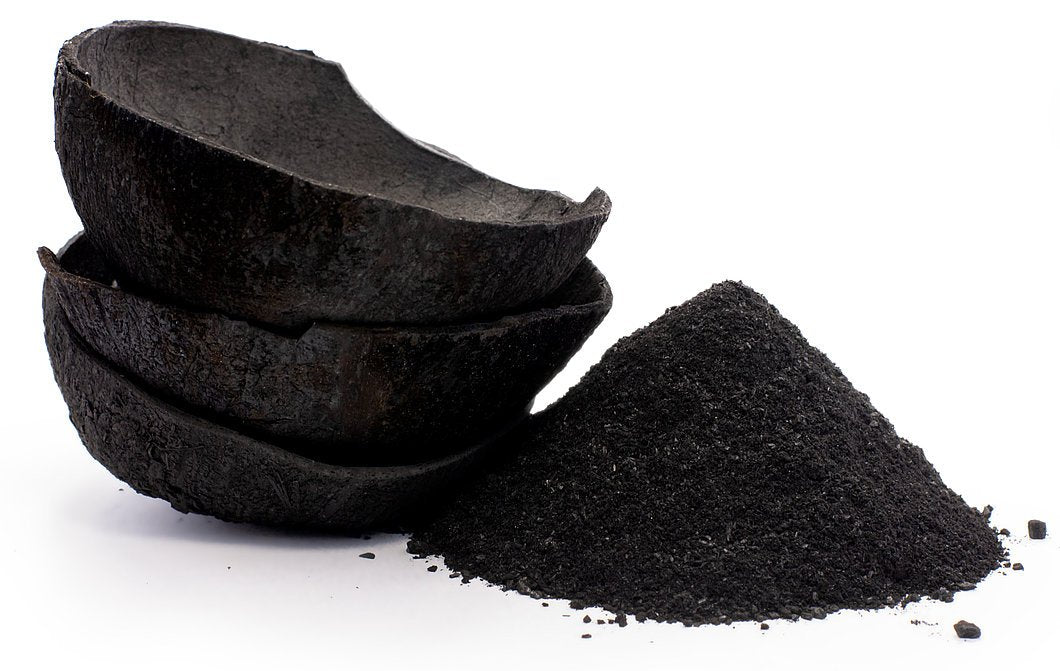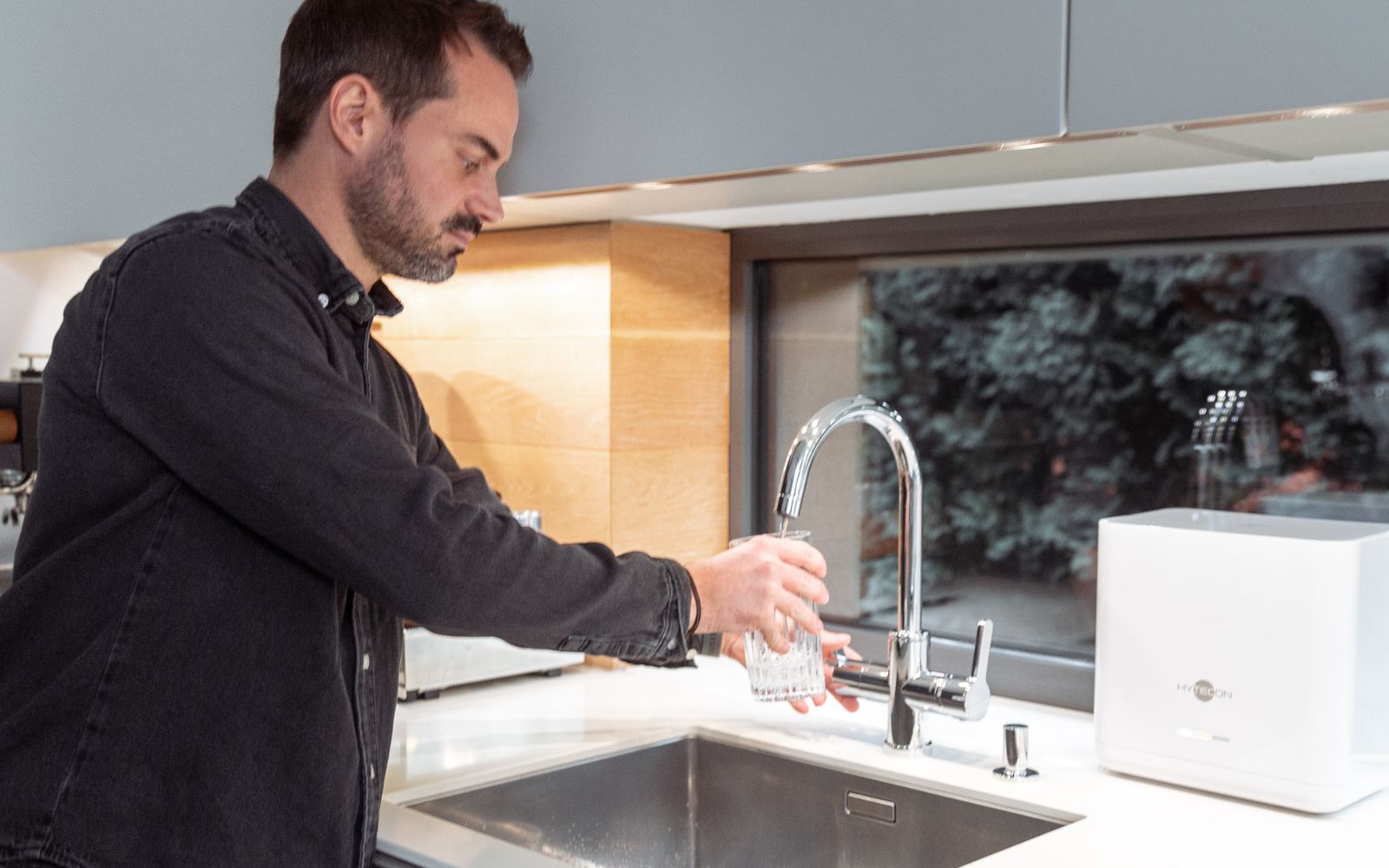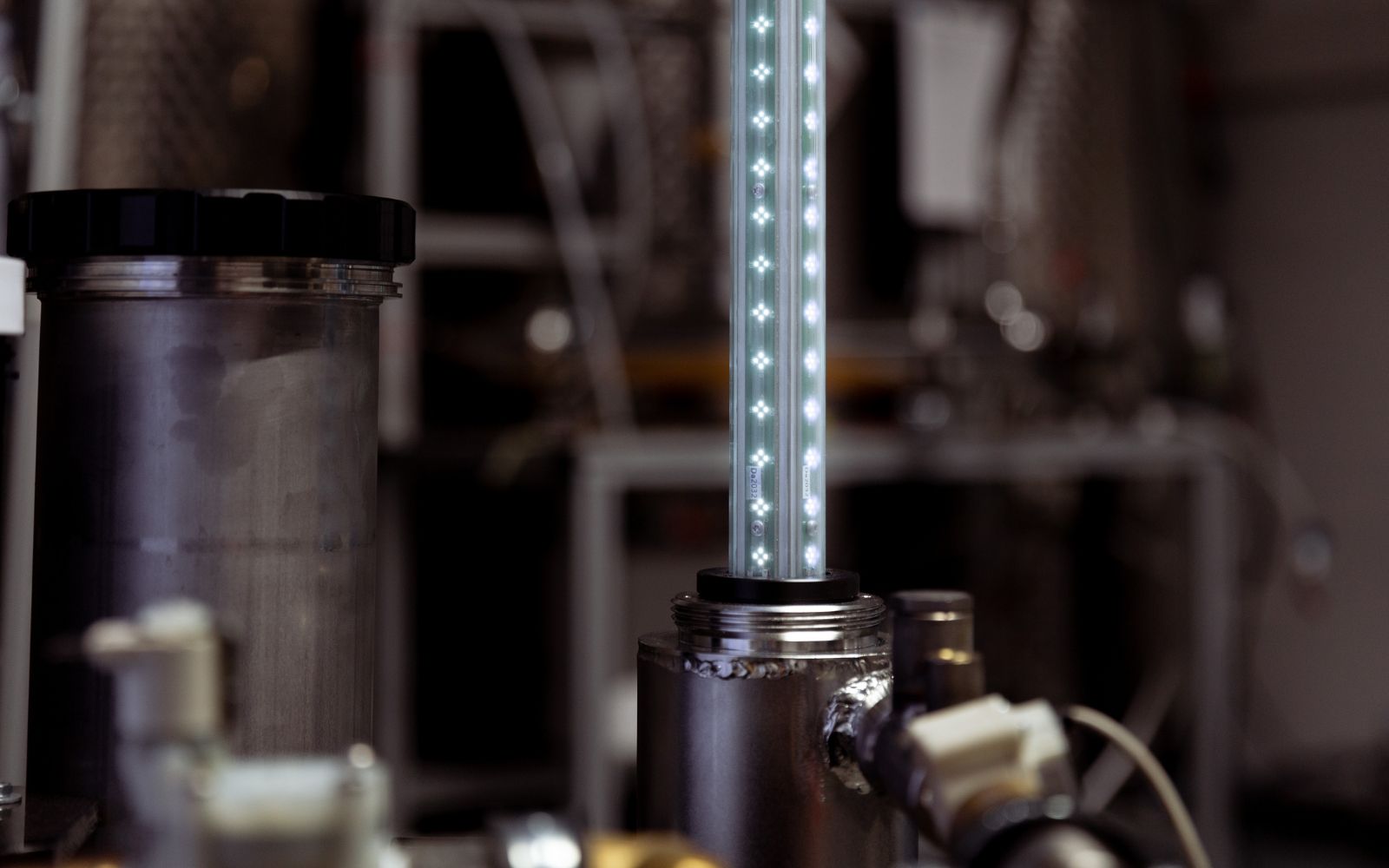
That is why the HYPRO WATER is better than any reverse osmosis
Basic knowledge about reverse osmosis:
Water consists of the atoms hydrogen and oxygen in a ratio of two to one (H2O). The connection of atoms to form larger structures is called a molecule. Compared to many other compounds, the water molecule is very small. If one separates two water columns with different salt concentrations from one another by a membrane through which only the water molecules can flow but, for example, no salts, then so much water flows from the side with the lower salt concentration to the other side until a concentration equilibrium is reached, i.e. the salt concentration becomes identical on both sides. This process is called osmosis and plays an important role in almost all metabolic processes. Osmosis is characterized by the fact that a pressure (osmotic pressure) is created that allows the water to flow from one side to the other without energy having to be supplied to the system from outside.
Application of osmotic pressure in reverse osmosis
In drinking water treatment and especially in seawater desalination, the osmotic principle is used by reversing it. It is then spoken of reverse osmosis (dt. reverse osmosis). With this method, on the side of the high concentration, e.g. on the seawater side, so much pressure is artificially generated using a pump that it exceeds the osmotic pressure. As a result, water now flows from the high concentration side to the other side, whereupon the undesirable substances such as the sea salt are retained. With seawater, the pressure that has to be generated is at least 30 bar and consequently results in high energy consumption. For drinking water, the pressure is about 3 bar, which reduces energy consumption. But there are some other serious disadvantages:
Due to the principle, the substances on the dirty water side concentrate very quickly and continuously. This would mean that the membrane would become blocked after a very short time and no more water would flow through the membrane. In order to avoid this, the membrane has to be constantly rinsed with plenty of water in order to remove the concentrated substances from the membrane. A typical ratio of the amounts of water is approx. 2/5, i.e. for every liter of pure water the process produces 2/5 liters of waste water. In some applications, this ratio can even be half.
The dirty water is hazardous waste
In the household, dirty water can contain various substances in concentrated form. Depending on the quality of the drinking water, in addition to salts, this would also include heavy metals, pesticides, drug residues, organic compounds and a range of microorganisms such as bacteria and viruses. It is therefore difficult to understand why some manufacturers advertise using the dirty water for washing or watering flowers. In fact, this is hazardous waste.
Insufficient monitoring of filter performance
Another negative aspect is the membrane itself. As long as there is pressure on the membrane, the pores contract. However, they relax when the pressure is not applied. This is a problem above all in the case of discontinuous operation, as is customary in households. Due to the changing load, the pores can expand to such an extent that unwanted substances can break through without the user having a chance to notice. Even major damage to the membrane cannot be identified or only with a great deal of effort, such as a differential pressure measurement, which is used on an industrial scale but can be ruled out in households.
In addition, microorganisms can penetrate the pores and grow through them over time. In this case, the membrane continuously releases germs to the pure water side, which is ultimately only noticed when the water smells unpleasant and foul. Unfortunately, in most cases it is already too late and contaminated water has been consumed.
Accordingly, there is no meaningful monitoring of the filters, which warns of the breakthrough of pollutants or germs, so the filters have to be changed regularly.
Regular filter change necessary
In order to prevent pathogenic germs from growing through or pollutants from breaking through, the membrane has to be replaced more or less frequently depending on use, which can result in high costs. And nonetheless, pollutants can always break through because it is not possible to monitor the filters. In addition, in many cases a number of filters are installed in front of the membrane in order to remove coarser substances beforehand, which would otherwise lead to immediate blockage. These filters must also be replaced regularly. Ultimately, reverse osmosis systems consist of several filters, all of which have to be changed regularly and result in high costs.
The filter cartridges need to be changed regularly
In order to avoid the inevitable growing through, the membrane has to be changed more or less frequently depending on use, which can result in high costs. In addition, in many cases a few filters are placed upstream of the membrane in order to remove coarser substances beforehand, which would otherwise lead to immediate blockage. These filters also have to be replaced regularly.
Low flow rate in the household
Due to the multiple filter stages and the "pushing" of the water to be purified through the membrane, reverse osmosis systems in private households often achieve a flow rate of less than 1.5 L/min. It takes almost a full minute to fill a drinking bottle.
Demineralized water - disadvantage for people and household
Apart from these disadvantages, the process is in principle poorly suited for the production of drinking water in the home. Assuming that the water is completely free of all substances after the treatment - one speaks of fully desalinated water - the water then no longer contains any pollutants, but also no substances that are definitely beneficial to human health, such as minerals. Reverse osmosis treated water in industrial applications is therefore usually artificially hardened again. Not necessarily with the background of promoting health, but because this water is highly corrosive and can lead to massive damage to pipes, valves and fittings.
The conclusion
In my view, the bottom line is that reverse osmosis is a technology that may be justified as a last resort in coastal areas with a lack of drinking water, such as in California or the United Arab Emirates. In the household, however, the technology has actually lost nothing, since it is hardly safe for non-professional users to handle, leads to increased water consumption and ultimately also causes very high operating costs. At this point it should be pointed out that the combination of activated carbon and UV, as offered with HYPRO WATER , is a standard process in the field of public water supply and Hytecon refers to the domestic use has been adapted.The filter performance is monitored using RFID technology and UV sensors (transmission) and warns of the breakthrough of pollutants if the filter capacity is exceeded. In addition, the industry standard of UV disinfection of >400J/m² was implemented in a small, compact device and protects safely and reliably against any kind of pathogenic germs in drinking water. With a flow rate of 3 L/min, an adequate flow rate could also be achieved, which exceeds that of reverse osmosis systems by more than twice.
The disadvantages of reverse osmosis in the home
- The dirty water that is produced during filtering is hazardous waste
- Without professional pressure measurements, there is a risk that germs will get into the filtered water and thus contaminate it
- The regular changing of the expensive filter cartridges must be observed
- After filtering, the water is demineralized and a hazard for the pipes, valves and fittings
- Additional addition of minerals when used regularly as drinking water
- Insufficient monitoring of the filters
- Danger of pollutants and pathogenic germs breaking through
You can find more information on this topic here.
.

